Over 20,000 people marched on Japan’s parliament today, July 29th (Sunday/Japan time) to demand a ban on nuclear power. The demonstration concluded with a candle-lit human chain surrounding the Diet like it was Fort Apache. Japan’s anti-nuclear protests are heating up like the Japanese summer, which reached 32 degrees Celsius today. Even the heat wasn’t enough to discourage today’s participants.
It was the largest protest yet.
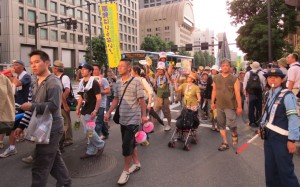
There was a huge discrepancy in the number of reported participants, with organizers claiming 200,000 people participated while the Tokyo Metropolitan Police Department put the number at under 20,000. However, no one argues that it surpassed the previous anti-nuclear demonstration on the first anniversary of the Fukushima meltdown this year, which was 14,000 people. Dutch journalist Kjeld Duits also captured the highlights of the protest eloquently in a video released today.
Japan’s anti-nuclear movement is growing rapidly, and at such a pace that the mainstream media is no longer able to ignore it. According to a survey conducted by the Mainichi Shinbun, one of Japan’s largest papers, 47% of the public feels solidarity with the protestors. While only 37% of those in their twenties agreed with protestors, over 50% of Japanese people in their 50s and 60s agreed with the movement.
The weekly magazine SAPIO and the monthly magazine Takarajima both published articles in the last week lamenting Japan’s mainstream media’s failure to fully report on the growing movement. In response to Takarajima’s enquiries only one television network responded as to why the coverage of the protests had been minimal, saying that they had given it due coverage. Other networks refused to answer.
Tokyo Electric Power Company (TEPCO), which was responsible for the second worst nuclear meltdown in history, had a yearly advertising budget of roughly 300 million dollars a year and has deftly used it to suppress anti-nuclear stories over the last decade, according to government critics.
The demonstrators began marching in Hibiya Park around 4:50 pm, passed by the headquarters of TEPCO, demonstrated in front of the Prime Minister’s residence, and despite a minor skirmish with the police, they almost completely encircled the National Diet (Parliament) in a candlelight rally that evening. The protestors were made up of up housewives, children, white-collar workers, Buddhist monks, and people from all strata of Japanese life. Holding placards in English and Japanese that read “No Nukes”, they demanded that the current Japanese government, headed by Prime Minister Yoshihiko Noda, forsake nuclear power and close down all Japan’s nuclear reactors.
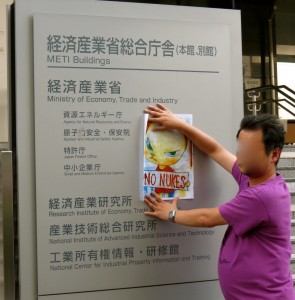
After the triple meltdown at Fukushima Daiichi nuclear plant in March of last year, all 50 working reactors in Japan were taken off-line while stress tests and routine maintenance were conducted.
Weekly demonstrations outside the Prime Minister’s residence have been going on for months, but in the last few weeks, thanks partly to a well-conducted internet campaign by citizen’s network, The Metropolitan Coalition Against Nukes (MCAN), the numbers have swelled to over 10,000 per protest in the last few weeks.
Many of the protestors feel that nuclear power is unwise in earthquake prone Japan. The National Diet of Japan Fukushima Nuclear Accident Independent Investigation Commission (NAIIC) released a report on the Fukushima disaster that blamed government and corporate incompetence for the meltdown recently which has further accelerated anti-nuclear sentiment. The report also suggested that the earthquake might have been a major factor in the meltdown of the aging Fukushima nuclear power plant—a suggestion that questions the fundamental safety of many nuclear power plants in this volcanic ridden country.
A tattoo-covered female artist, a printing school trainee, and a white-collar worker head the loosely structured MCAN. At a press conference, this Friday, Misao Redwolf, the female artists and spokesperson noted, “If the individual Japanese people can influence their government’s decisions, we consider this as a big victory for our country.”
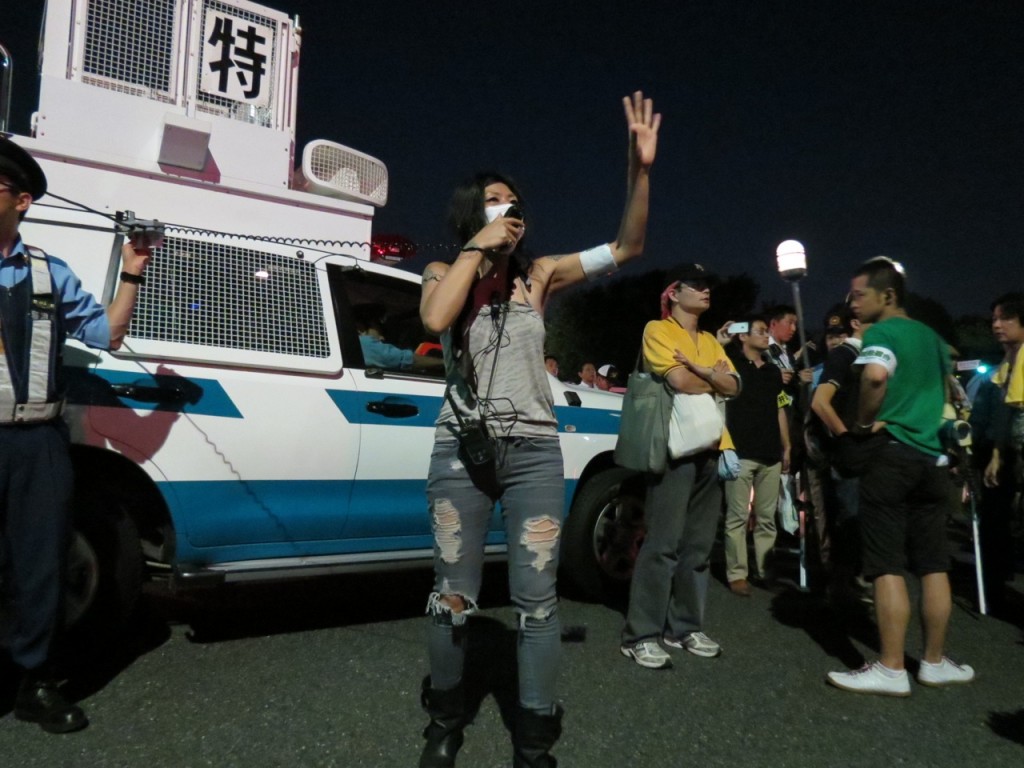
MCAN has managed to gather huge numbers of local citizens in peaceful protests via the use of social media, such as Twitter and Facebook. Even former Prime Minister Yukio Hatoyama, have recently joined the protests—although many dismiss his actions as shameless political opportunism.
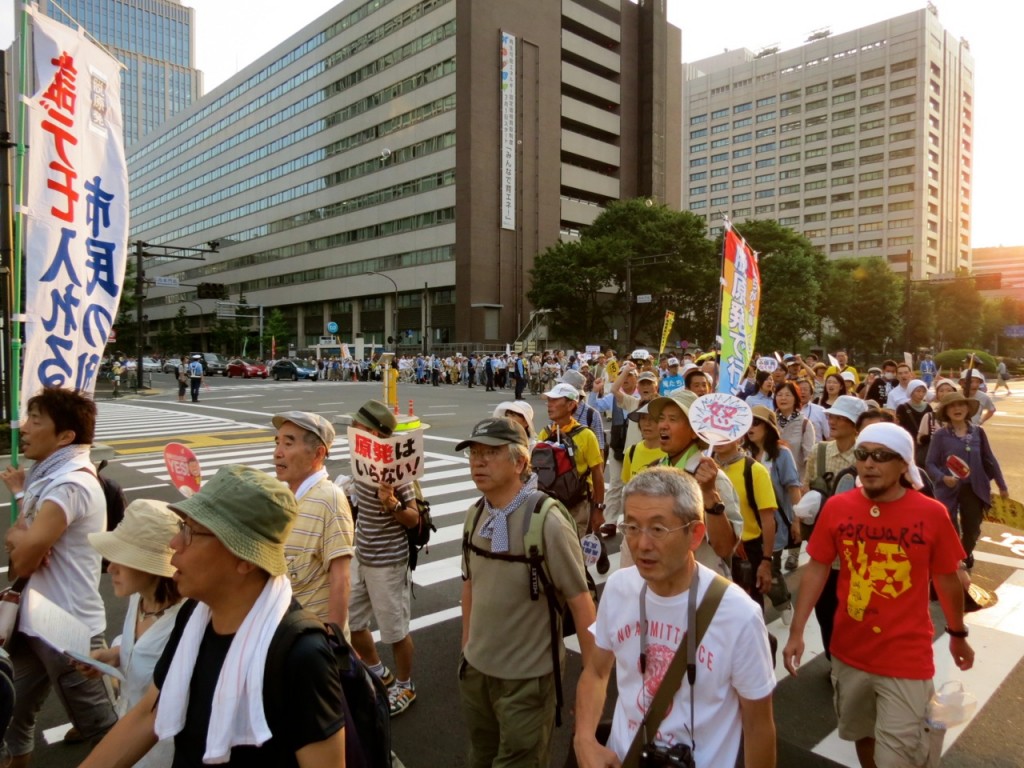
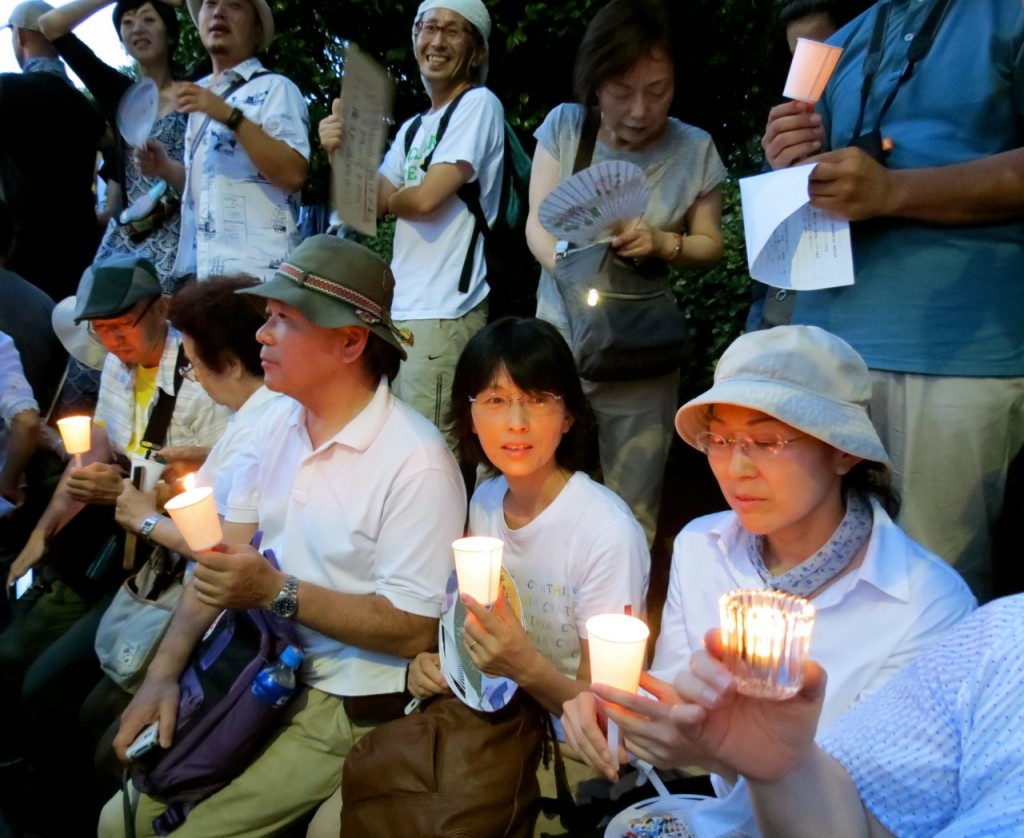
The organizers have made great efforts to make the demonstrations and protests family events, and kept their distance from the radical left and extremist groups.
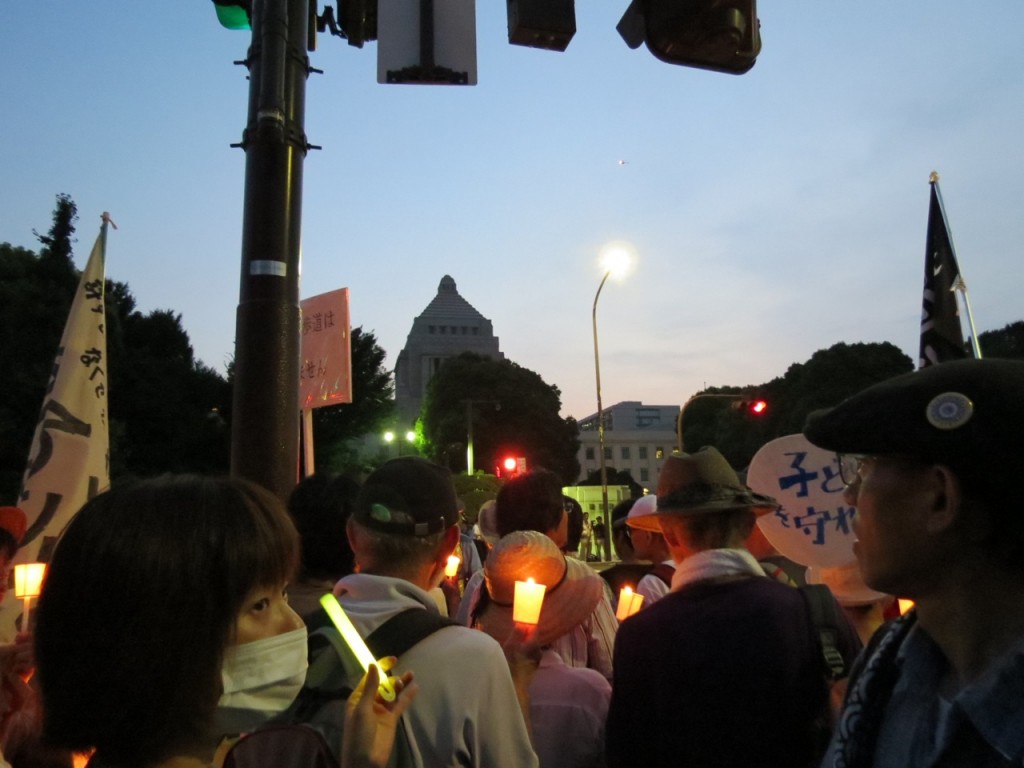
Misao Redwolf, a leader of the Metropolitan Coalition Against Nukes, explained the genesis of the movement as follows, “Around March and May, people came (to the protests) but they left after 30 minutes, because they were scared. So our goal is also to make people feel good in what they are doing…I am embarrassed to use this phrasing, but in Japan, ‘normal’ people are not used to protesting at demonstrations. People who protest are seen as outsiders or troublemakers. So, we decided to create a more social environment, and make it easier for people to access the demo. We are trying to set up family spaces for the demo.”
The protests are surprising in their civility and that the protestors clean up the garbage after they are done and politely thank the police for overseeing the events. There were several hundred police present maintaining order at today’s events. The leaders of the protest also called for the crowds to behave themselves at several points in the evening.
Mr. Taku Tomita, 36, is a ward councilman. He recently married but has no children yet. “I have many friends who have children, and I wanted to contribute in making good things happen for my country,” he said. To make for a more relaxed family atmosphere, he wore a festive costume and was giving directions to the crowd of protesters, reminding them to, “kindly show your best manners and behave nicely.”
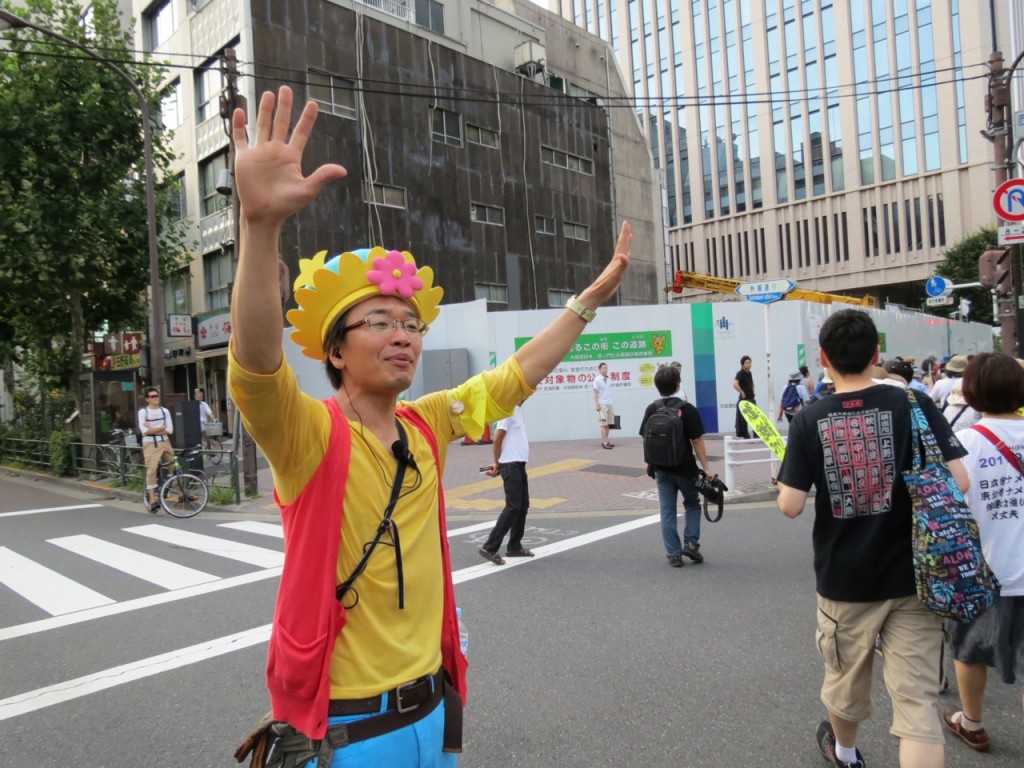
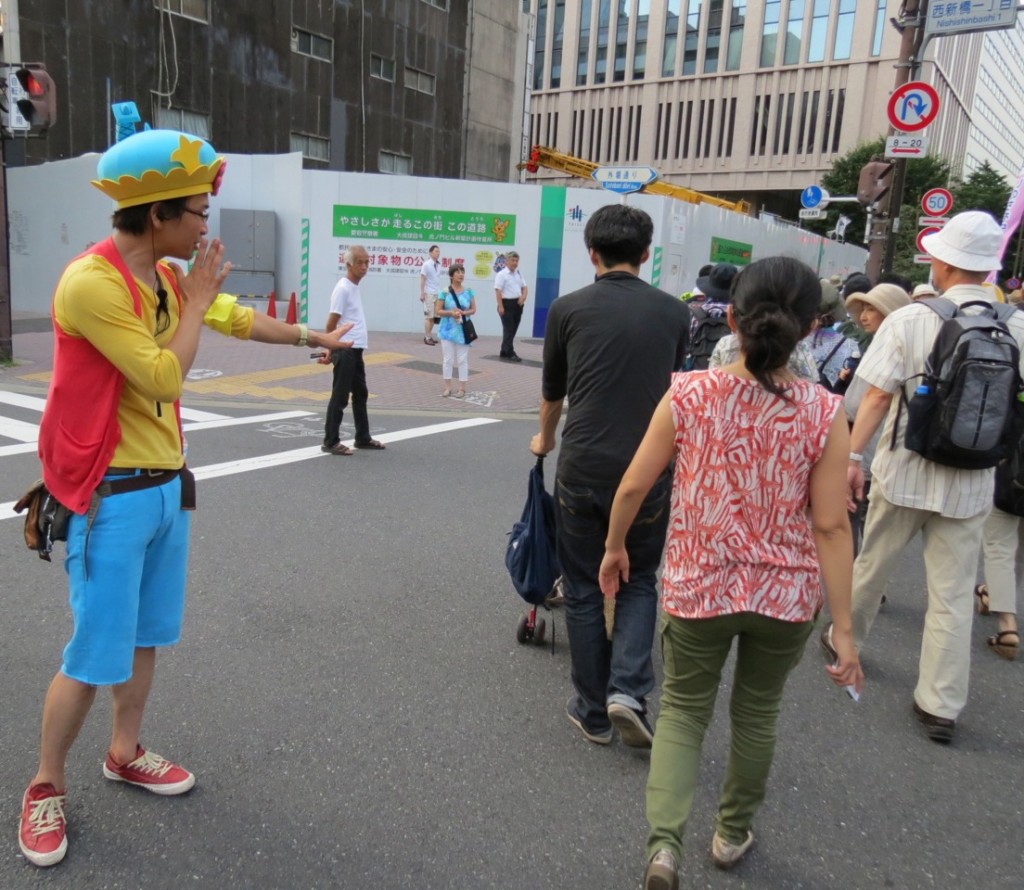
The police did arrest two protestors for obstruction of duty after clashes with the special mobile police squad but other than that there were no real violent confrontations between the police and the citizens.
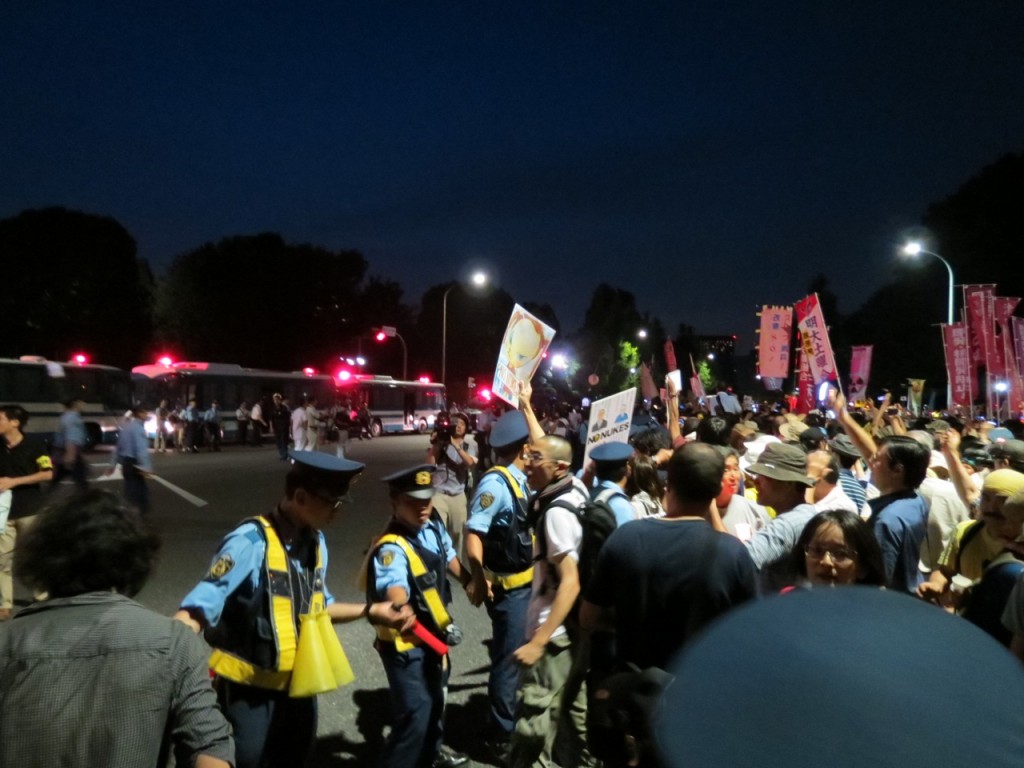
When asked about his views on the anti-nuclear protests, Naoto Matsumura, aka the Buddha of Fukushima said: “Fight until at least 5 people get arrested, if you don’t fight until arrests take place, you won’t change anything.” Naoto Matsumura is fighting, and he is fighting until radiation takes his life, for his protest against the government is to stay inside the marked forbidden zone around the crippled Fukushima Daiichi nuclear power plant.
Normally, police relations to protestors in Japan are highly adversarial but at present, both sides are remarkably well behaved. A sign, perhaps, that even amongst the traditionally conservative police, that the protestors may have some sympathizers. The times seem to be changing faster than the Japanese government.
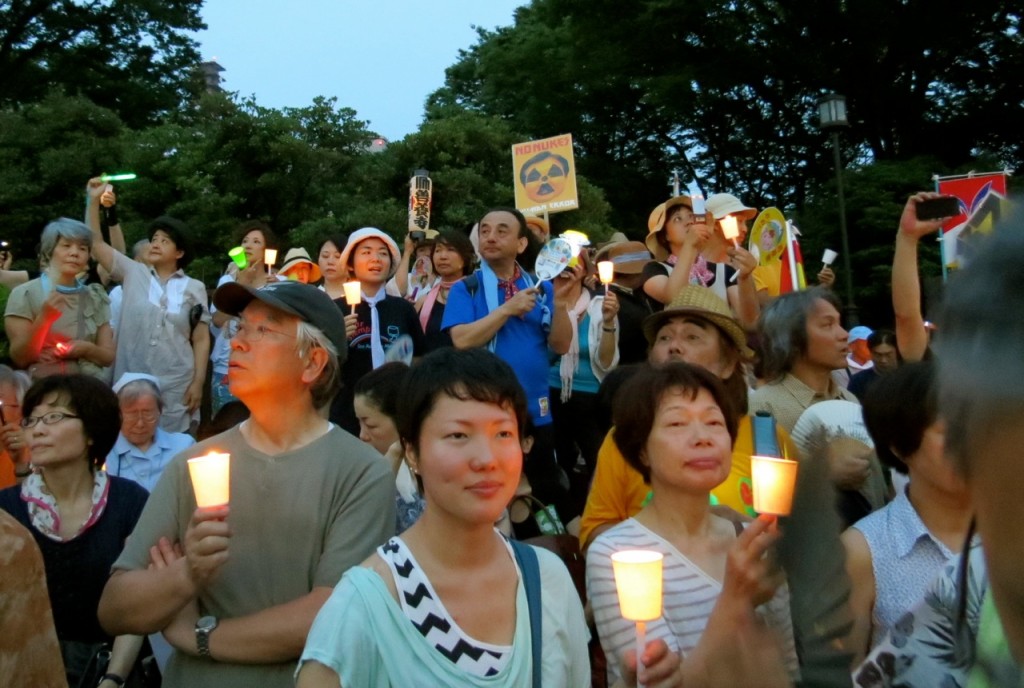
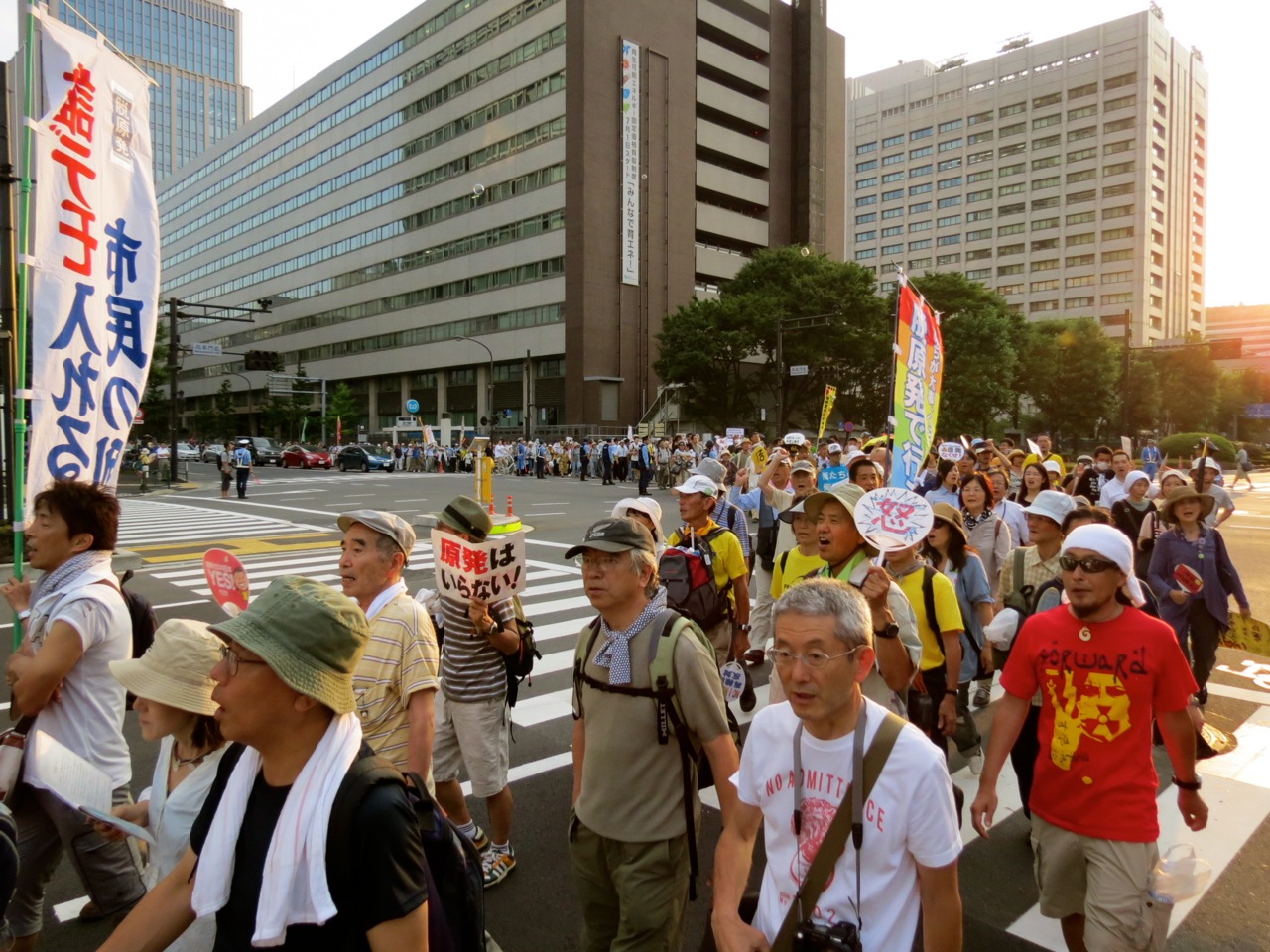
An accurate article that reflects why the anti-nuke movement in Japan continues to grow. Today I marched in the parade and we passed by the Tepco headquarters. And just when it seemed appropriate to me that verbal insults (fantasies of Christopher Hitchens) were called for, I noticed that I was next to a family with little kids, like 4 and 5. These little kids were smiling, and it didn’t seem quite right to get crass, and then I looked at them again and they looked so happy to see me, and so I took their picture. I then noticed that their parents thought it was neat that I was interacting with their kids. Sadly, this took the wind out of my anger. I ended up focusing on the marching band just up ahead– led by 20-ish creative types dressed in gas masks and using nuclear storage casks for drums, they were great, they made me dance, and I had fun.
I think there should be some perspective with these numbers, whichever side of the nuclear issue you take.
20,000 is quite a lot for a Japanese protest, but considering that this is in what by some counts is still the largest city in the world, home to about 30,000,000 people, with a superb public transit system.. only being able to draw 20,000 on a Sunday during school vacation is not really that much.
An Exile concert at Tokyo Dome draws more than twice this number…and it’s not even free.
I suspect that it will be pretty hard to extend the numbers much beyond the “professional” protester base. You can count on the usual suspects – teaching/labor unions, the JCP, bored Hippies now at retirement age trying to relive the past, middle aged people who are too young to be Hippies seizing this chance, “concerned parents” (dragging along their kids in the 35C summer heat and exposing them to a big dose of UV radiation to boost crowd numbers. Just one bad sunburn in childhood doubles the risk of skin cancer. Irony.), slightly rich and famous entertainers trying to become slightly more rich and famous, and college students who are against any technology which doesn’t have an Apple logo on it – to make signs, show up and learn a few chants that usually focus on the word “NO!” … not offer any actual practical solutions or anything.. and then go home very proud of themselves.
Are they really getting any “average” people?
How protest crowd photos are cropped speaks volumes about the actual numbers. When there are crowd photos with so many people that each head is 1 pixel..then I’ll start to believe the organizers’ claims.
Level 3,
Are they really getting any “average” people?
How protest crowd photos are cropped speaks volumes about the actual numbers. When there are crowd photos with so many people that each head is 1 pixel..then I’ll start to believe the organizers’ claims.
>> You are right, “average people” rarely have the time or interest in commentating on nuclear issues in Japan, particularly people who aren’t from Japan and have no stake in its long term future. Your concern is endearing, but your comments are baseless.
Former Prime Minister Hatoyama and political kingmaker Ozawa are running a coup right now based on the anti-nuclear sentiment of Japanese people. You don’t think they know the difference between “average” Japanese people and half-baked semi-literate hippies with nothing better to do with their time? Well, then you fit the average profile of a nuclear troll, beholden to your paycheck, morally bankrupt, misinformed, and I might add boring.
Manif Anti Nucléaire chaque Lundi 18h Elysee Palace, PARIS
Anti Nuclear Protest EVERY MONDAY 6pm Elysee Palace, PARIS
Anti Atom Protest JEDEN MONTAG 18h Elysee Palace, PARIS
Des manifestants anti-nucléaire encerclent le Parlement japonais
http://www.youtube.com/watch?v=6ZuwkDY2Mus
http://www.youtube.com/watch?v=8CqHgd2SHsY
http://www.youtube.com/watch?v=iju45cpPaIY
http://www.youtube.com/watch?v=vjm8WFpnTUU
http://www.youtube.com/watch?v=IY9kQn2JGUo
http://www.rts.ch/info/toute-l-info/4165390.html
http://www.youtube.com/watch?v=SBsCv2ldack
http://www.youtube.com/watch?v=Qd3HZHXDx3A
http://www.youtube.com/watch?v=z368oCdp_Ek
http://www.youtube.com/watch?v=jnGP_6VpmdA
http://www.youtube.com/watch?v=zQpjfllzc_0
Why is there is such a high support level among older Japanese people, while the support level from younger Japanese people seems so low? It’s the complete opposite of most protest movements in the West.
The Mainichi Shinbun article was enlightening. Maybe the older generation who remembers every nuclear mishap in the last decade simply is wiser?
[…] more about the demo with nice pics and video links on http://www.japansubculture.com/japanese-government-literally-surrounded-by-anti-nuclear-protestors-o… Share this:TwitterFacebookLike this:LikeBe the first to like this. This entry was posted in […]
In response to James’ post above:
The demo on July 16 attracted between 70,000 (police estimate) and 170, 000 marchers (organizers’ estimate). Participants seemingly over 50 years old vastly outnumbered younger Japanese. However, at a much smaller but more vocal anti-nuke demo through Nakano on Saturday afternoon, the majority was young people.
Photos from the July 16 demo here: http://cargocollective.com/clivevictorfrance/Anti-Nuclear-Demo-Tokyo-July-16-2012
Anti Nuclear Protest EVERY MONDAY 6pm Elysee Palace, PARIS
Manif Anti Nucléaire chaque Lundi 18h – Palais de l’Élysée, PARIS
Anti Atom Protest JEDEN MONTAG 18h Elysee Palast, PARIS
############################################################
Tokyo Protesters encirle Tokyo Prime Minister every week Friday evening
http://www.youtube.com/watch?v=ydkIRbX1IqU
http://www.youtube.com/watch?v=6ZuwkDY2Mus
http://www.youtube.com/watch?v=8CqHgd2SHsY
http://www.youtube.com/watch?v=iju45cpPaIY
http://www.youtube.com/watch?v=vjm8WFpnTUU
http://www.youtube.com/watch?v=IY9kQn2JGUo
http://www.rts.ch/info/toute-l-info/4165390.html
http://www.youtube.com/watch?v=SBsCv2ldack
http://www.youtube.com/watch?v=Qd3HZHXDx3A
http://www.youtube.com/watch?v=z368oCdp_Ek
http://www.youtube.com/watch?v=jnGP_6VpmdA
http://www.youtube.com/watch?v=zQpjfllzc_0
http://www.youtube.com/watch?v=y22UGiB_A40
http://www.youtube.com/watch?v=BXcUEJEyS5k&sns=tw
http://nobphoto01.sakura.ne.jp/qtvr/houimou2012/houimou2012.07.29.html
http://www.ustream.tv/channel/iwakamiyasumi5
[…] http://www.japansubculture.com/japanese-government-literally-surrounded-by-anti-nuclear-protestors-o… […]
[…] than 20,000 people marched on Japan’s parliament on July 29 to demand a ban on nuclear […]
[…] than 20,000 people marched on Japan’s parliament on July 29 to demand a ban on nuclear […]
Well, a few weeks later and we learn what DOES draw a crowd. Japan Olympic medalist parade in Ginza drew 500,000 people. Probably an overestimate. Nobody really has an interest in lowballing those numbers. If anti-nuke protests draw that crowd.. give me a call.
..side note, I see I am accused of being a paid nuclear troll by another commenter. Yawn. I wish. Nope, I’m just interested in knowing I can depend on an air conditioned break room when I’m working outside at a site on these 35C days. And less air pollution from burning fossil fuels because I have asthma.
(Oh, and let me blow your mind, I work on developing renewable energy, nothing nuclear involved. That’s where my salary comes from. )
Lazy “debate” tactics just expose you have no argument and don’t even really know why you support the protests except for the sake of protesting. Which is especially sad as there are some very legitimate (and quite obvious) arguments against nuclear power, which none of you are making, because they require thinking and boring explanations that can’t be crafted into rhymes or chants. So much easier to instead turn to bullshit conspiracy theories about burning tsunami waste to poison the country, rainbow and unicorn hopes about getting 100% renewable energy yesterday, and your Boy Who Cried Cesium-137 antics, and then just label anyone who proves you wrong a shill.
Well, here’s a new one to fry your brains. Last week in Kansai, the surplus in electric power available was smaller than the 2.36GW generated by the Oi nuclear plant. Therefore, nuclear power prevented rolling blackouts during the 36C weather. Preventing who knows how many heat stroke deaths.
Data is all on the KEPCO website, but I’m sure plenty of people will say it’s all fake anyway, right? Sigh. Though if they’re gonna fake the data, why not make it seem even better, and longer, and get as braggadocious as a freelance Asia/sports journalist with visa problems?
Rationalize some denial or conspiracy theory for that one.